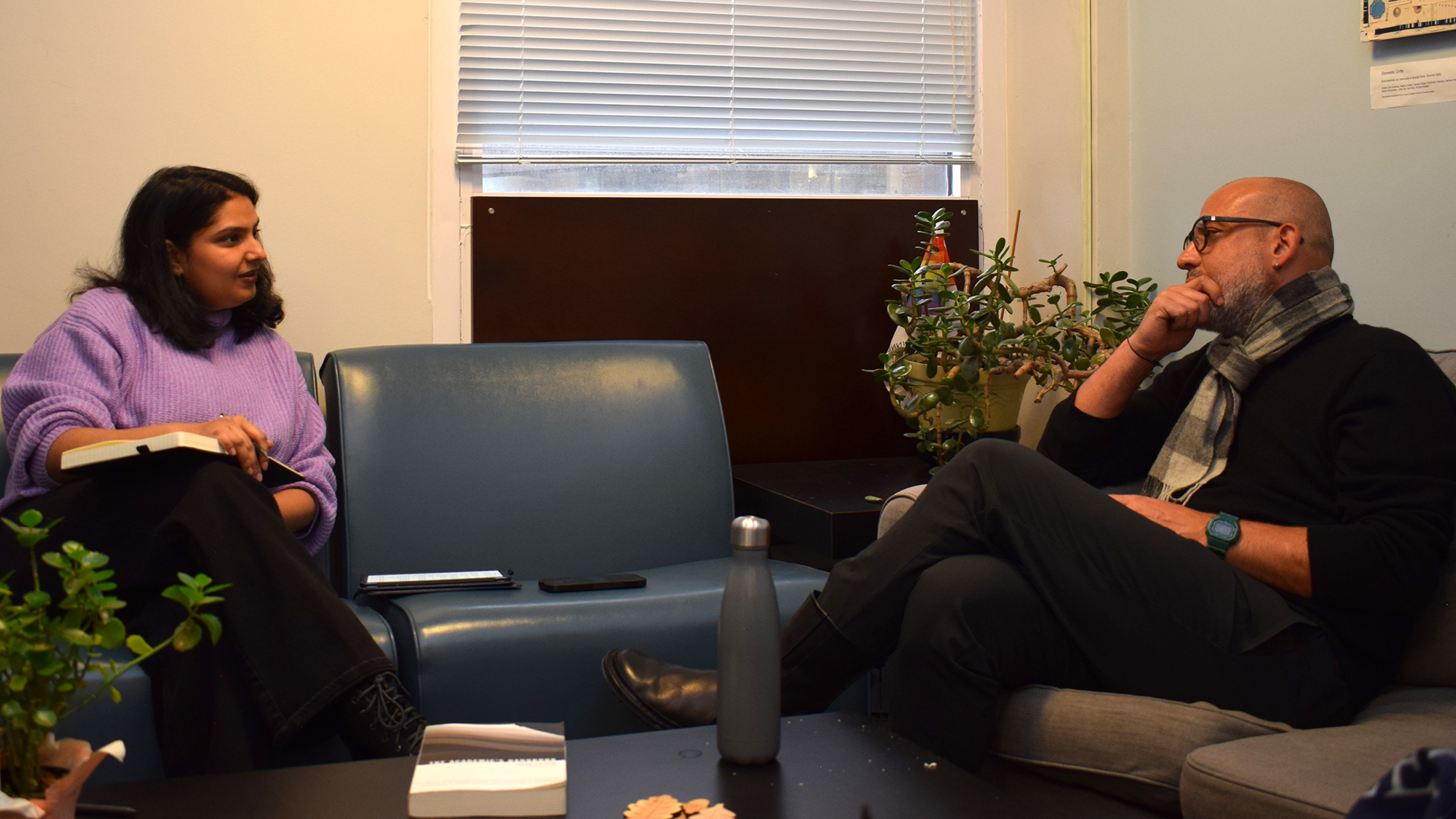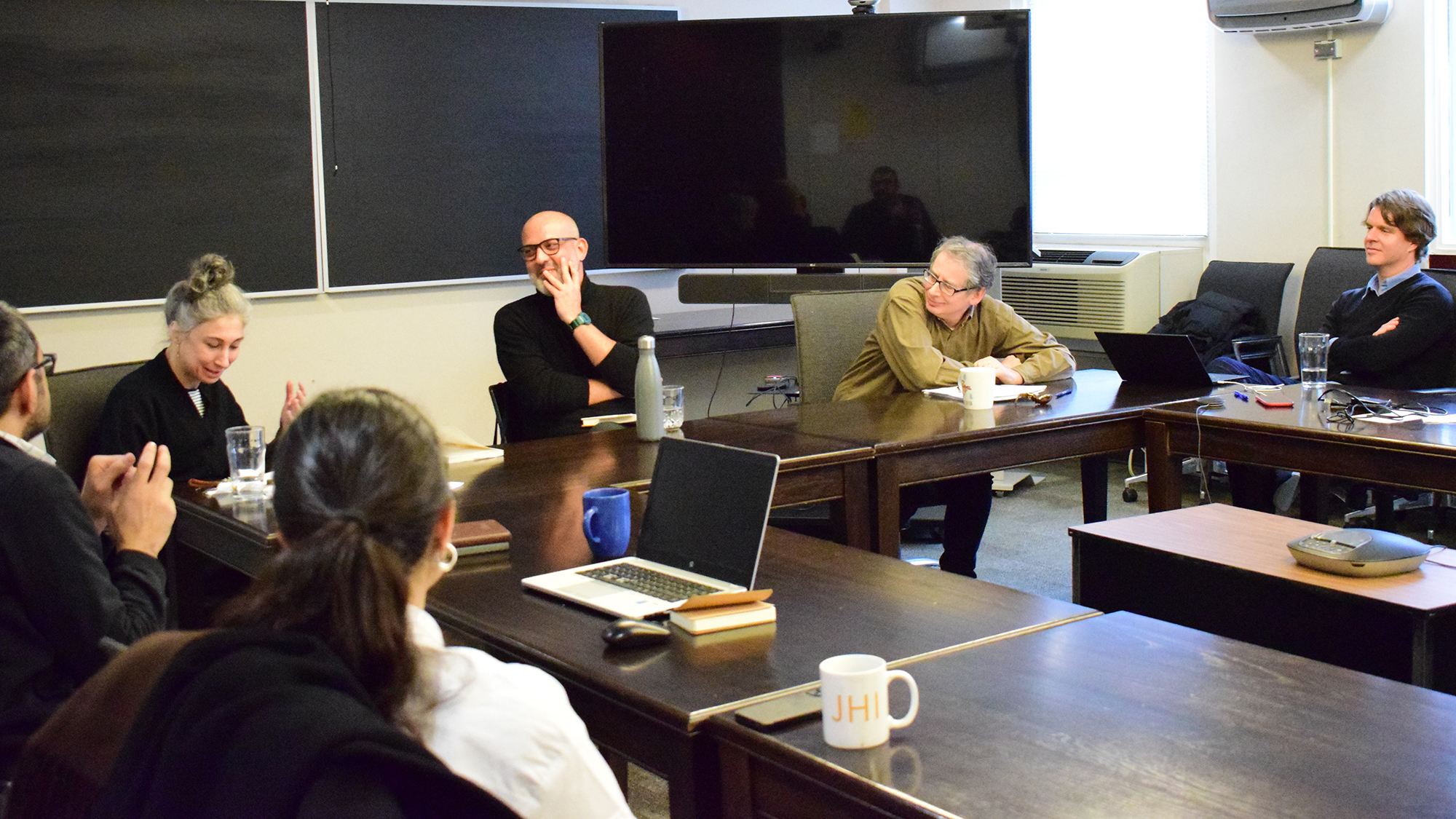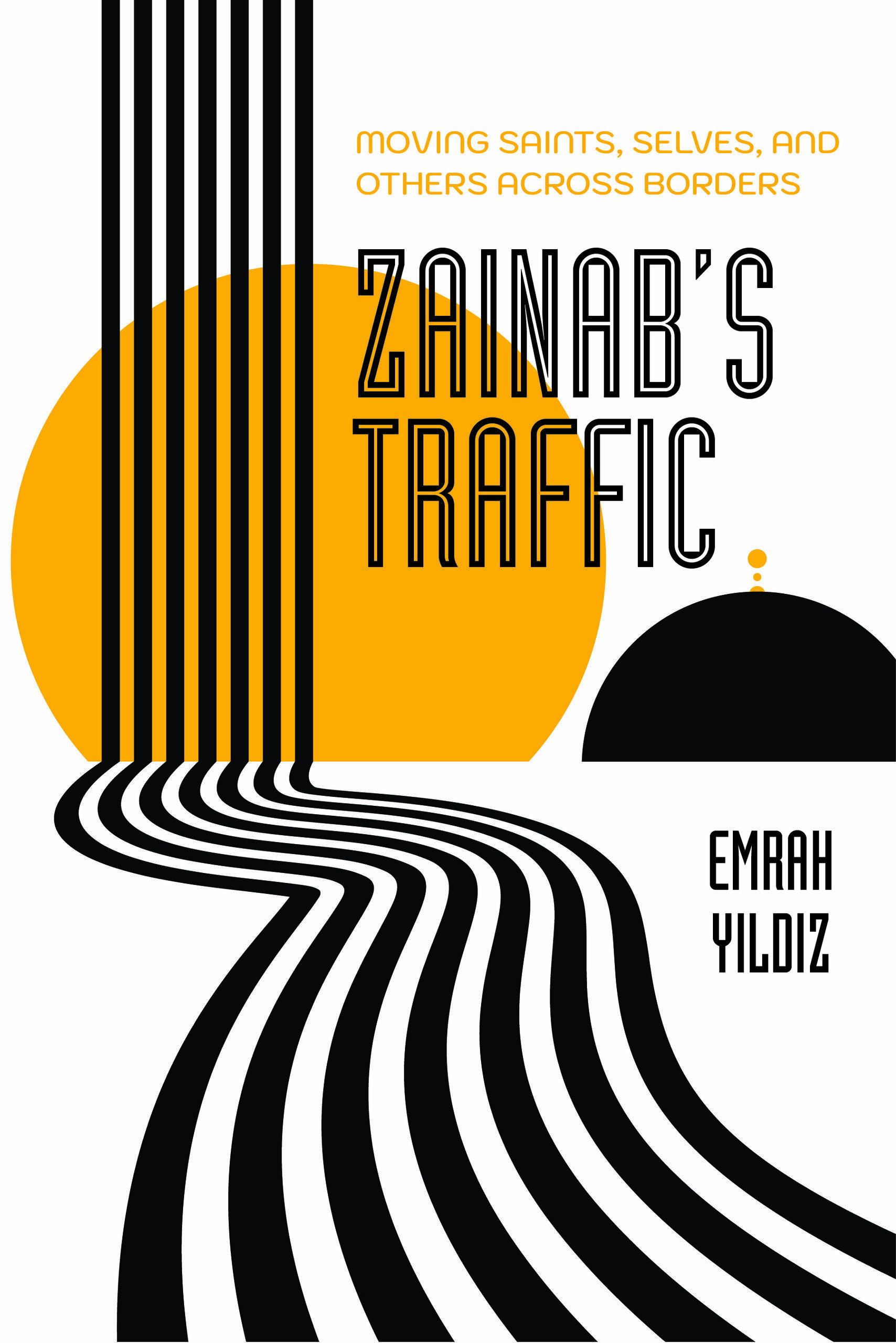

February 2025 saw Emrah Yildiz of Northwestern University visit the Department for the Study of Religion as a guest speaker in the Winter program of the 2024-25 DSR Lecture Series. He spoke about his book, Zainab’s Traffic: Moving Saints, Selves, and Others across Borders, with a participatory audience including DSR faculty Simon Coleman, Nada Moumtaz and Kevin Lewis O’Neill.
An assistant professor of anthropology and Middle East and North African studies, Emrah Yildiz is the author of Zainab’s Traffic: Moving Saints, Selves, and Others across Borders (University of California Press, 2024), editor of “kaçak | qaçax | قاچاق : Fugitive Forms of Bureaucracy and Economy across Southwest Asia” (2024), and co-editor of “Resistance Everywhere: The Gezi Protests and Dissident Visions of Turkey” (2014).
During his visit, Professor Yildiz spoke with guest interviewer Rutika Gandhi, PhD candidate in the Global Studies Program at the University of British Columbia, to compile a Q&A for the DSR website about his work. Rutika is interested in religious/spiritual movements, sites, and communities, with a particular focus on South Asian religions. She says that “it was a genuine pleasure to learn about Dr. Yildiz’s research and creative process. His work is truly fascinating – I hope our paths cross again.”
Can you share a little bit about your academic journey and what inspired you to focus your research on the pathways of Zainab?
As an anthropology of cross-border mobility, this project emerged from a longstanding fascination with movements—of people, goods, and ideas—between Turkey and Iran. Growing up in Istanbul during the 80s and 90s, I witnessed ever-present debates around political Islam and secular state formation. Iran often served as a cautionary example in these discussions, as the “other” of Turkey or a contrasting constellation of state-religion dynamics. While Turkey grappled with secularist reforms, Iran’s post-revolutionary state positioned Islam as a language of dissent.
My entry into studying saint visitation or ziyarat came much later, sparked by a newspaper article I reference in the introduction of my book. However, my academic foundation began earlier during my Master’s, where I focused on diasporic youth of Iranian, Kurdish, and Turkish descent in Berlin. Teaching them English while learning Persian from them deepened my interest in Iran-Turkey connections. This blend of personal, cultural, and linguistic curiosity shaped the project.

Your book highlights the interplay of religion, economy, and politics in pilgrimage. How do these intersections reshape understandings of Islamic rituals in contemporary anthropology?
There are historical conditions of colonialism of state formation in the region. The Orientalist tropes that often frame these conditions, such as the secularization thesis, have led anthropologists to take a relativizing role in understanding Islam, using the region and Islam to provincialize these Orientalist tropes and the assumptions of political liberalism with its secular elective affinities.
After decades of urban protests and shifting political landscapes, however, we need new analytical tools to understand religion and region anew in the Middle East. I think there is a certain kind of shift in both how social life is organized, and how politics is conducted. I don't necessarily find as useful in this moment some of the conventional ways of studying Islam exclusively as an ethical grammar.
I was really interested in finding a different kind of language and method of studying Muslim practices, and was drawn to (ziyarat) saint visitation as a particularly interesting object of inquiry. Rather than thinking of ritual as a scripturally canonized manual for pious self-cultivation, the book makes the argument for approaching rituals of mobility such as ziyarat as a traffic of pilgrims, material goods, and ideas across Iran, Turkey, and Syria.
Think of actual traffic: we know the rules, but we bend them, adapt them. Likewise, pilgrims and devotees improvise within—and sometimes against—scriptural or societal norms.
Could you please elaborate on the concept of ‘traffic’ as a method and an analytic?
I borrow the term from Gayle Rubin, who uses this term to recast the role of women as objects of marital exchange. Rubin’s contention is that if we reduce the analysis of marriage as a social institution to the “exchange of women” in the ritual act of the wedding, we overlook the broader movements in what Rubin terms as the sex-gender system that cannot be accounted for within a bilateral framework of reciprocity.
In the book I retool ‘traffic’ to study ziyarat as a ritual of mobility. Pilgrims aren’t merely seeking intercession [an exchange with the saint]; they’re navigating geographies, histories, and social categories. Think of actual traffic: we know the rules, but we bend them, adapt them. Likewise, pilgrims and devotees improvise within—and sometimes against—scriptural or societal norms. There’s a directional force between the saint and the pilgrims that shapes these journeys.
 Yet, contemporary mobility studies often approach movement within a binary opposition of mobility versus immobility, obscuring critical dimensions like directionality, pace, rhythm, and intensity. This parallels a shift in migration scholarship as well. Earlier work emphasized directionality for instance, as in emigration and immigration by anchoring movement in not only the act and location.
Yet, contemporary mobility studies often approach movement within a binary opposition of mobility versus immobility, obscuring critical dimensions like directionality, pace, rhythm, and intensity. This parallels a shift in migration scholarship as well. Earlier work emphasized directionality for instance, as in emigration and immigration by anchoring movement in not only the act and location.
I think a similar thing happened in mobility studies because a pilgrimage is often seen as a well-structured route around a particular site, but its journey is not reducible to the destination. This interplay between means and ends, the dynamism of structure and agency prevalent in saint visitation inspired me to approach saint visitation through the lens of traffic to recover historically grounded and socially generative dimensions of transnational mobility.
Your book’s style is so richly ethnographic and historical, yet its engagement with literature feels concise and even playful. Was this a conscious decision? Why did you take this approach, and how do you personally navigate ethnographic writing?
That’s a great and yet a challenging question! To be honest, it was not entirely intentional. As an author, I aimed at writing an accessible yet multifaceted book that could resonate with specialists and general readers alike. In a way, there’s a stealth layer to the body text of the book. The endnotes, for example, hold deeper scholarly conversations for the specialists to dig into. That said, they are mostly contained to that stealth layer, so that they never overwhelm the story of saint visitation I set out to tell.
I wanted to tell a compelling story first and foremost, one that is both analytically rigorous and textually interesting. Good storytelling requires honoring the three-dimensionality of the people we write about. They shouldn’t just appear in opening vignettes and vanish; they deserve space to breathe. That’s why the book includes interludes—moments where I step back and let encounters with interlocutors unfold. These sections give readers enough context about both me as an anthropologist and my interlocutors without forcing analysis into every scene.
Especially today, we need more nuanced and humanizing stories about the Middle East. Analytical depth and creative storytelling do not have to be mutually exclusive. I tried to bridge that gap—prioritizing readability while grounding the work in analytical rigor.
Did I succeed? That’s for readers to decide! But the form of the book was something I agonized over. How do you make dense material feel alive? It’s a balancing act, but one I felt was worth attempting.



